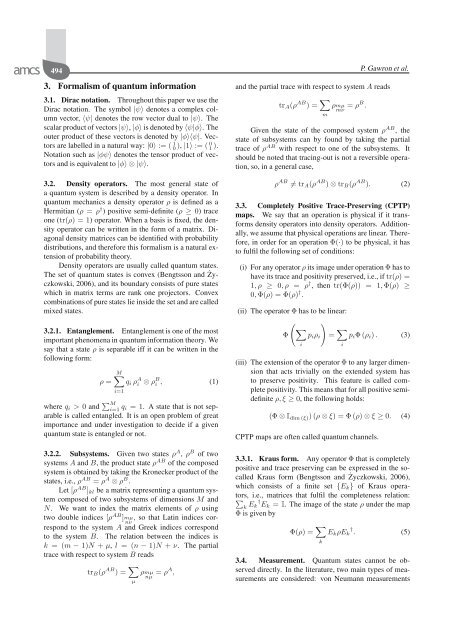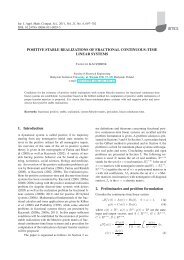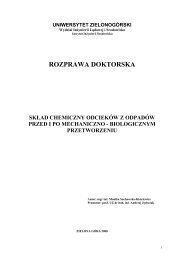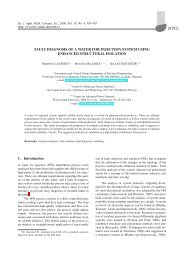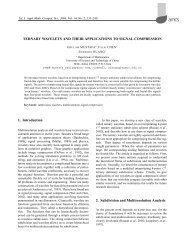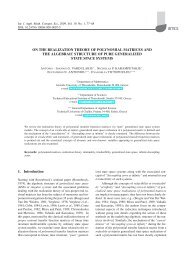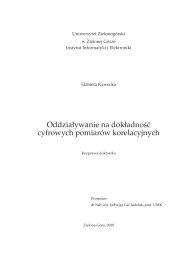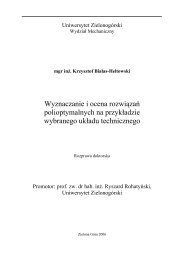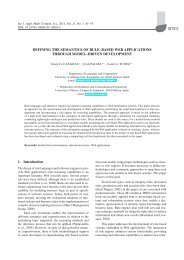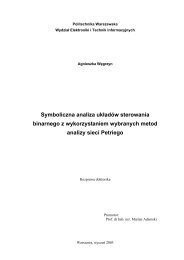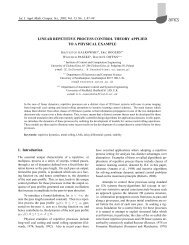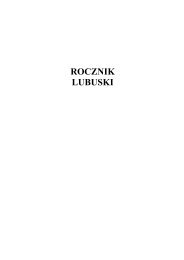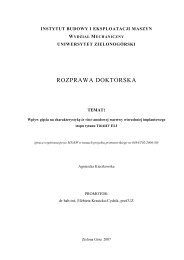NOISE EFFECTS IN THE QUANTUM SEARCH ALGORITHM FROM ...
NOISE EFFECTS IN THE QUANTUM SEARCH ALGORITHM FROM ...
NOISE EFFECTS IN THE QUANTUM SEARCH ALGORITHM FROM ...
You also want an ePaper? Increase the reach of your titles
YUMPU automatically turns print PDFs into web optimized ePapers that Google loves.
494 P. Gawron et al.<br />
3. Formalism of quantum information<br />
3.1. Dirac notation. Throughout this paper we use the<br />
Dirac notation. The symbol |ψ〉 denotes a complex column<br />
vector, 〈ψ| denotes the row vector dual to |ψ〉. The<br />
scalar product of vectors |ψ〉, |φ〉 is denoted by 〈ψ|φ〉. The<br />
outer product of these vectors is denoted by |φ〉〈ψ|. Vectors<br />
are labelled in a natural way: |0〉 := ( 1 0 ), |1〉 := ( 0 1 ).<br />
Notation such as |φψ〉 denotes the tensor product of vectors<br />
and is equivalent to |φ〉⊗|ψ〉.<br />
and the partial trace with respect to system A reads<br />
tr A (ρ AB )= ∑ m<br />
ρmμ<br />
mν = ρB .<br />
Given the state of the composed system ρ AB ,the<br />
state of subsystems can by found by taking the partial<br />
trace of ρ AB with respect to one of the subsystems. It<br />
should be noted that tracing-out is not a reversible operation,<br />
so, in a general case,<br />
3.2. Density operators. The most general state of<br />
a quantum system is described by a density operator. In<br />
quantum mechanics a density operator ρ is defined as a<br />
Hermitian (ρ = ρ † ) positive semi-definite (ρ ≥ 0) trace<br />
one (tr(ρ) =1) operator. When a basis is fixed, the density<br />
operator can be written in the form of a matrix. Diagonal<br />
density matrices can be identified with probability<br />
distributions, and therefore this formalism is a natural extension<br />
of probability theory.<br />
Density operators are usually called quantum states.<br />
The set of quantum states is convex (Bengtsson and Życzkowski,<br />
2006), and its boundary consists of pure states<br />
which in matrix terms are rank one projectors. Convex<br />
combinations of pure states lie inside the set and are called<br />
mixed states.<br />
3.2.1. Entanglement. Entanglement is one of the most<br />
important phenomena in quantum information theory. We<br />
say that a state ρ is separable iff it can be written in the<br />
following form:<br />
ρ =<br />
M∑<br />
q i ρ A i ⊗ ρ B i , (1)<br />
i=1<br />
where q i > 0 and ∑ M<br />
i=1 q i =1. A state that is not separable<br />
is called entangled. It is an open problem of great<br />
importance and under investigation to decide if a given<br />
quantum state is entangled or not.<br />
3.2.2. Subsystems. Given two states ρ A , ρ B of two<br />
systems A and B, the product state ρ AB of the composed<br />
system is obtained by taking the Kronecker product of the<br />
states, i.e., ρ AB = ρ A ⊗ ρ B .<br />
Let [ρ AB ] kl be a matrix representing a quantum system<br />
composed of two subsystems of dimensions M and<br />
N. We want to index the matrix elements of ρ using<br />
two double indices [ρ AB ]mμ, so that Latin indices correspond<br />
to the system A and Greek indices correspond<br />
nν<br />
to the system B. The relation between the indices is<br />
k =(m − 1)N + μ, l =(n − 1)N + ν. The partial<br />
trace with respect to system B reads<br />
tr B (ρ AB )= ∑ μ<br />
ρmμ<br />
nμ = ρA ,<br />
ρ AB ≠tr A (ρ AB ) ⊗ tr B (ρ AB ). (2)<br />
3.3. Completely Positive Trace-Preserving (CPTP)<br />
maps. We say that an operation is physical if it transforms<br />
density operators into density operators. Additionally,<br />
we assume that physical operations are linear. Therefore,<br />
in order for an operation Φ(·) to be physical, it has<br />
to fulfil the following set of conditions:<br />
(i) For any operator ρ its image under operation Φ has to<br />
have its trace and positivity preserved, i.e., if tr(ρ) =<br />
1,ρ ≥ 0,ρ = ρ † , then tr(Φ(ρ)) = 1, Φ(ρ) ≥<br />
0, Φ(ρ) =Φ(ρ) † .<br />
(ii) The operator Φ has to be linear:<br />
( ) ∑<br />
Φ p i ρ i = ∑ p i Φ(ρ i ) . (3)<br />
i<br />
i<br />
(iii) The extension of the operator Φ to any larger dimension<br />
that acts trivially on the extended system has<br />
to preserve positivity. This feature is called complete<br />
positivity. This means that for all positive semidefinite<br />
ρ, ξ ≥ 0, the following holds:<br />
(Φ ⊗ I dim (ξ) )(ρ ⊗ ξ) =Φ(ρ) ⊗ ξ ≥ 0. (4)<br />
CPTP maps are often called quantum channels.<br />
3.3.1. Kraus form. Any operator Φ that is completely<br />
positive and trace preserving can be expressed in the socalled<br />
Kraus form (Bengtsson and Życzkowski, 2006),<br />
which consists of a finite set {E k } of Kraus operators,<br />
i.e., matrices that fulfil the completeness relation:<br />
∑<br />
k E k † E k = I. The image of the state ρ under the map<br />
Φ is given by<br />
Φ(ρ) = ∑ k<br />
E k ρE k † . (5)<br />
3.4. Measurement. Quantum states cannot be observed<br />
directly. In the literature, two main types of measurements<br />
are considered: von Neumann measurements


